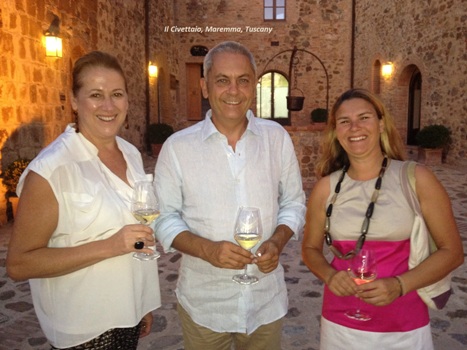Best Red Wine in Australia has the freshest food in town!
When making red wine, the winemaker has at his disposal a far greater range of techniques, and must make more decisions than when making white wine. The process is essentially the same, gathering the grapes, fermentation and maturation and bottling. But there is one main difference - extracting the color from the skins. At various stages the winemaker can intervene to change the style of the wine he is making. Just follow some straight forward rules, and you are on your way to making a best red wine in Australia. The processes are as follows 1. Picking Grapes To make the best red wine we need good quality, fully ripened red wine grapes, which are clean and free from disease. |
Before harvesting the grapes in the autumn/fall, the sugar levels tend to rise from day to day depending on the weather, while at the same time the acidity levels fall off. Getting the balance between the two is important - too much acid will mean that the wine will be harsh and take longer to develop, too little and the wine will not age.
The riper the grapes are, the higher the natural sugar levels will be, which in turn will result in higher total alcohol content (not always desirable). The character we are looking for ranges from something 'soft and subtle' to something 'big, powerful and complex'. So the winemaker must work with the grape varietal character combined with what nature has provided in that year. The secret is to always work with nature.
The ideal sugar and acid readings are as follows
· Natural Sugar - 22 to 24 degrees Bricks
· Acid content should be about 5.5 to 6.5 g/liter
· Best red wine softens with age.
1. De-stemming
In order to extract the color, the grapes will be fermented on the skins - this is where the red color comes from. After picking the grapes, the stalks have to be removed by passing them through a de-stemmer. At the same time, the grapes are crushed very gently and passed into a large open topped fermentation container. It is important not to damage the pips or stalks as this will allow excess tannin to enter the sample, which will ultimately cause a bitter wine tasting.
2. Maceration and Fermentation
Now the grapes are ready to undergo fermentation. Cultured yeast is sprinkled on to the top of the grapes and gently plunged in. During the next few days it will be necessary to macerate the grapes - a process of plunging the cap (grapes and skins that have floated to the top) into the must (grape juice).
As the fermentation progresses, the grape skins are constantly being forced up to the top of the bin, and by macerating a few times a day this cap is pushed down into the must to ensure maximum skin contact, therefore enabling good color extraction. The longer this process goes on the deeper the color of wine.
3. Pressing
When we are satisfied that we have enough color in the wine - even though the fermentation is still in full swing - it is time to press the grapes, and so removing all the skins, and any other solid matter. The wine is then pumped into a fermentation vessel and sealed with a fermentation lock to continue its ferment.
At this stage the must will be very warm as the ferment is almost through. When wines are allowed to ferment at higher temperatures, specifically red wines, the fermentation is fast, the yeast cells will now die bringing the fermentation to an end. The wine is racked in to another vessel, and some form of filtration may take place, but this is not always necessary.
4. Maturation
This is an interesting stage as barrels of different types of oak can be used for the maturation process. For instance a French oak barrel will give a softer character than say an American oak barrel. By choosing the type of oak, we can influence the flavor of our wine. Also the length of time the wine stays in the barrel will make a significant difference. The wine extracts tannin from the wood which enhances its character and flavor.
5. Bottling
Some wines may have remained in barrel for a year or more before bottling, so this is a very straight forward stage of racking the wine out of the barrel, filtering it then bottling. The bottles are now laid down in a cellar, some wines are made to be drunk while young, whereas others will be laid down for several years to soften and mature before drinking.
6. Appreciation
The best time for any wine drinker - samples the fruits of your labor - and enjoys it!
Rob Hemphill has been a professional winemaker (Maremma Wine Italy) for over 20 years, and is now a freelance marketing writer living in the UK. He specializes in wine consultancy and has a wide knowledge in vines, vineyards and wine growing techniques as well. His favorite varietals are Gewurztraminer and Shiraz.
To learn more about wine, please visit Understanding for Classico Chianti Italian where you will find a wealth of interesting wine information.
Ever made homemade wine before? Don't know how to, why not
visit: http://italian-wine-clubs.tumblr.com
